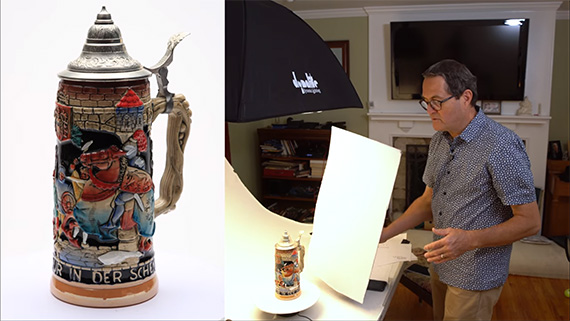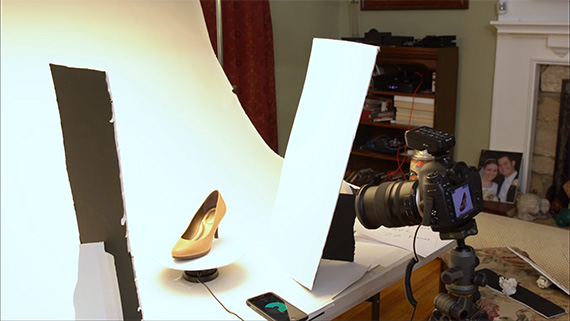Staying on the cutting edge of e-commerce means moving into the world of 360 degree product photography. But making the jump might be a little intimidating if you’re only used to 2D. Luckily, it’s not really that difficult or expensive to set up. In the video below, Jay P. Morgan from the Slanted Lens demonstrates both the setup and the lighting:

One area where the e-commerce world has always fallen short of in-store shopping is that prospective buyers can’t handle the goods. And while you still can’t touch objects (yet), 360 degree product photography bridges the gap some by allowing shoppers to examine all sides of an item. It’s not quite tactile, but it’s considerably more engaging than straight 2D images. Which is why many companies are moving toward using 360 degree views.
Creating 360 degree product shots is surprisingly simple. All you need is 20–30 frames of your product shot at different angles. Generally a turntable is used, so your camera stays motionless while your product moves. There are a lot of different turntables out there, but Morgan really likes the Syrp Genie Mini, which is operated with an easy-to-use smartphone app.
The setup Morgan uses is quite simple: a softbox, a white background, and some white card for what he calls “key light.” With the Syrp Genie app, all your photos are taken automatically at the rate you specify. Once they’re done, you just need to run through a program that compiles them and you’re done. Easy!
Have you tried 360 degree product photography yet?
Like This Article?
Don't Miss The Next One!
Join over 100,000 photographers of all experience levels who receive our free photography tips and articles to stay current:








You can center items a few different ways, but I would suggest a couple of red laser lines and set them up to intersect at the center point of your turntable. This way you can see them and they are gone once you turn them off.
Good write up! Yes, i have recently taken over 360 product photography at my company (we sell eyeglasses online) and have had to learn all about this technique. Its quite enjoyable although can be a bit tricky finding turntable center when shooting smaller items.
We use a software called ShutterStream and have a similar lighting set up as you communicate with a top down softbox (although have 2 additional softboxes).
Do you have any tips for centering objects?